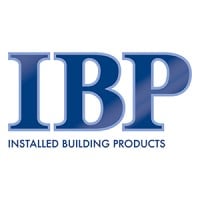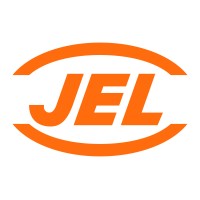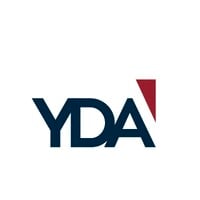
Al Jaber Group Company Cyber Security Posture
aljaber.comAl Jaber Group (AJC) is a privately owned, multi-disciplinary conglomerate, based in Abu Dhabi and with branches in the Kingdom of Saudi Arabia and Qatar. AJC provides its professional services in the construction, heavy lifting and logistics, manufacturing and trading sectors. With a workforce in excess of 55,000 employees and up-to-date seaside facilities in the industrial hub of Abu Dhabi, AJC is able to meet the constantly changing demands of its target markets with exceptional engineering and information technology. The strength of AJC is derived through controlled growth, diversification and longstanding management. AJC demonstrates its outstanding capabilities through synergistic divisions and resources, operating to deliver seamless results for clients. AJC has engineered and constructed over 7,000 km of Roads, more than 7,000 villas and landmark commercial buildings; it is one of the largest construction contractors in the region. Al Jaber Group is also an industry leader in oil & gas pipelines construction work, oil rigs refurbishment, industrial fabrication, heavy lifting and heavy transportation. The Group possesses over 300 cranes in its fleet as well as the country’s largest construction equipment/vehicle fleet (more than 10,000 units) managed under one umbrella. Moreover, AJC has more than 30 years of history of land and sea transportation/logistics in the UAE, its fleet includes 25 ships with worldwide marine transportation capability.
AJG Company Details
al-jaber-group
10,001+ employees
152113
23
Construction
aljaber.com
Scan still pending
AL _1136180
In-progress
Between 900 and 1000
This score is AI-generated and less favored by cyber insurers, who prefer the TPRM score.
 AJG Global Score
AJG Global Score.png)

Al Jaber Group Company Scoring based on AI Models
| Model Name | Date | Description | Current Score Difference | Score |
|---|---|---|---|---|
| AVERAGE-Industry | 03-12-2025 | This score represents the average cybersecurity rating of companies already scanned within the same industry. It provides a benchmark to compare an individual company's security posture against its industry peers. | N/A | Between 900 and 1000 |
Al Jaber Group Company Cyber Security News & History
| Entity | Type | Severity | Impact | Seen | Url ID | Details | View |
|---|
Al Jaber Group Company Subsidiaries

Al Jaber Group (AJC) is a privately owned, multi-disciplinary conglomerate, based in Abu Dhabi and with branches in the Kingdom of Saudi Arabia and Qatar. AJC provides its professional services in the construction, heavy lifting and logistics, manufacturing and trading sectors. With a workforce in excess of 55,000 employees and up-to-date seaside facilities in the industrial hub of Abu Dhabi, AJC is able to meet the constantly changing demands of its target markets with exceptional engineering and information technology. The strength of AJC is derived through controlled growth, diversification and longstanding management. AJC demonstrates its outstanding capabilities through synergistic divisions and resources, operating to deliver seamless results for clients. AJC has engineered and constructed over 7,000 km of Roads, more than 7,000 villas and landmark commercial buildings; it is one of the largest construction contractors in the region. Al Jaber Group is also an industry leader in oil & gas pipelines construction work, oil rigs refurbishment, industrial fabrication, heavy lifting and heavy transportation. The Group possesses over 300 cranes in its fleet as well as the country’s largest construction equipment/vehicle fleet (more than 10,000 units) managed under one umbrella. Moreover, AJC has more than 30 years of history of land and sea transportation/logistics in the UAE, its fleet includes 25 ships with worldwide marine transportation capability.
Access Data Using Our API

Get company history
.png)
AJG Cyber Security News
UAE'S ADNOC to deploy autonomous AI in the energy sector for the first time
UAE energy giant ADNOC will apply highly autonomous agentic artificial intelligence in the energy industry for the first time.
Adnoc awards $2bn contracts to back localisation
Local manufacturing is taking precedence for Adnoc, which is working to mitigate supply chain risks and cut delivery time for equipment.
Sebastian Kurz’s UAE Ties Spark Scandal Over Hidden Business and Surveillance Links
Former Austrian chancellor's secretive role with UAE energy firms and spyware-linked ventures raises concerns over political influence and misuse of European ...
The talented Mr. Kurz: How Austria’s ex-leader made it big in Israel’s cyber industry
Former Austrian Chancellor Sebastian Kurz started a company with the man behind the infamous Pegasus spyware, Israeli entrepreneur Shalev Hulio.
IDEX and NAVDEX 2025 to foster international cooperation to advance global security
IDEX and NAVDEX provide a global platform that brings together decision-makers and experts to explore the latest advancements in defence technology and ...
H.E. Dr. Sultan Ahmed Al Jaber
H.E. Dr. Sultan Ahmed Al Jaber is a member of the UAE Federal Cabinet, minister of industry and advanced technology, and the UAE's special envoy for climate ...
Sultan Al Jaber on COP28, Climate, and More
To hear the big oil CEO tell it, climate progress depends on market buy-in as much as international negotiations.
‘Absolute scandal’: UAE state oil firm able to read Cop28 climate summit emails
Exclusive: UN conference president Sultan Al Jaber is also head of oil firm, which was consulted on how to respond to a media inquiry.
Executive Bodies
The Board of Management of Volkswagen AG comprises nine members. Each Board Member is responsible for one or more functions within the Volkswagen Group.

AJG Similar Companies

Akfen Holding
Having established its first company in 1976, Akfen gained holding status in the year 1999 and eventually became one of Turkey’s top infrastructure investment holdings. Akfen Holding invests in, manages and coordinates its subsidiaries and affiliates active in industries such as airport management

Bouygues Construction
With 32,500 employees working in 60 countries, Bouygues Construction designs, builds and rehabilitates the infrastructures and buildings that are essential for a sustainable society. All over the world, the teams support the development of low-carbon energy production and public transport infrastruc

PT. Yasa Patria Perkasa
It took more than 30 years of credible experience to construct our identity. To establish the proven quality works of YASA Construction which all began in 1981. Throughout that precious time, our hands have made us impregnated in practical knowledge and right-minded integrity in the business of cons

Installed Building Products
Headquartered in Columbus, Ohio, Installed Building Products has over 250 locations throughout the United States. We are the second largest insulation installer in the U.S. residential new construction market. We offer a diverse portfolio of products for new and existing residential, multifamily, a

Jurong Engineering Limited
JEL is a leading engineering and construction company based in Singapore, with a network of companies spanning across Asia, Africa, and the Middle East. Since inception in 1971, JEL has reliably delivered successful projects in power & industrial plants in more than 30 countries. With multifaceted

YDA Group
Temelleri 1954 yılına dayanan YDA Group; bünyesindeki ilk inşaat & taahhüt firması olan AKSA İnşaat ile 47 yılı; Group’un Onursal Başkanı ve Kurucusu rahmetli Yaşar Dede Arslan’ın adına ithafen kurulan YDA İnşaat ile de 27 yılı geride bırakarak yarım asrı aşan tecrübesiyl

Frequently Asked Questions (FAQ) on Cybersecurity Incidents
AJG CyberSecurity History Information
Total Incidents: According to Rankiteo, AJG has faced 0 incidents in the past.
Incident Types: As of the current reporting period, AJG has not encountered any cybersecurity incidents.
Total Financial Loss: The total financial loss from these incidents is estimated to be {total_financial_loss}.
Cybersecurity Posture: The company's overall cybersecurity posture is described as Al Jaber Group (AJC) is a privately owned, multi-disciplinary conglomerate, based in Abu Dhabi and with branches in the Kingdom of Saudi Arabia and Qatar. AJC provides its professional services in the construction, heavy lifting and logistics, manufacturing and trading sectors. With a workforce in excess of 55,000 employees and up-to-date seaside facilities in the industrial hub of Abu Dhabi, AJC is able to meet the constantly changing demands of its target markets with exceptional engineering and information technology. The strength of AJC is derived through controlled growth, diversification and longstanding management. AJC demonstrates its outstanding capabilities through synergistic divisions and resources, operating to deliver seamless results for clients. AJC has engineered and constructed over 7,000 km of Roads, more than 7,000 villas and landmark commercial buildings; it is one of the largest construction contractors in the region. Al Jaber Group is also an industry leader in oil & gas pipelines construction work, oil rigs refurbishment, industrial fabrication, heavy lifting and heavy transportation. The Group possesses over 300 cranes in its fleet as well as the country’s largest construction equipment/vehicle fleet (more than 10,000 units) managed under one umbrella. Moreover, AJC has more than 30 years of history of land and sea transportation/logistics in the UAE, its fleet includes 25 ships with worldwide marine transportation capability..
Detection and Response: The company detects and responds to cybersecurity incidents through {description_of_detection_and_response_process}.
Incident Details
Incident 1: Ransomware Attack
Title: {Incident_Title}
Description: {Brief_description_of_the_incident}
Date Detected: {Detection_Date}
Date Publicly Disclosed: {Disclosure_Date}
Date Resolved: {Resolution_Date}
Type: {Type_of_Attack}
Attack Vector: {Attack_Vector}
Vulnerability Exploited: {Vulnerability}
Threat Actor: {Threat_Actor}
Motivation: {Motivation}
Incident 2: Data Breach
Title: {Incident_Title}
Description: {Brief_description_of_the_incident}
Date Detected: {Detection_Date}
Date Publicly Disclosed: {Disclosure_Date}
Date Resolved: {Resolution_Date}
Type: {Type_of_Attack}
Attack Vector: {Attack_Vector}
Vulnerability Exploited: {Vulnerability}
Threat Actor: {Threat_Actor}
Motivation: {Motivation}
Common Attack Types: As of now, the company has not encountered any reported incidents involving common cyberattacks.
Identification of Attack Vectors: The company identifies the attack vectors used in incidents through {description_of_identification_process}.
Impact of the Incidents
Incident 1: Ransomware Attack
Financial Loss: {Financial_Loss}
Data Compromised: {Data_Compromised}
Systems Affected: {Systems_Affected}
Downtime: {Downtime}
Operational Impact: {Operational_Impact}
Conversion Rate Impact: {Conversion_Rate_Impact}
Revenue Loss: {Revenue_Loss}
Customer Complaints: {Customer_Complaints}
Brand Reputation Impact: {Brand_Reputation_Impact}
Legal Liabilities: {Legal_Liabilities}
Identity Theft Risk: {Identity_Theft_Risk}
Payment Information Risk: {Payment_Information_Risk}
Incident 2: Data Breach
Financial Loss: {Financial_Loss}
Data Compromised: {Data_Compromised}
Systems Affected: {Systems_Affected}
Downtime: {Downtime}
Operational Impact: {Operational_Impact}
Conversion Rate Impact: {Conversion_Rate_Impact}
Revenue Loss: {Revenue_Loss}
Customer Complaints: {Customer_Complaints}
Brand Reputation Impact: {Brand_Reputation_Impact}
Legal Liabilities: {Legal_Liabilities}
Identity Theft Risk: {Identity_Theft_Risk}
Payment Information Risk: {Payment_Information_Risk}
Average Financial Loss: The average financial loss per incident is {average_financial_loss}.
Commonly Compromised Data Types: The types of data most commonly compromised in incidents are {list_of_commonly_compromised_data_types}.
Incident 1: Ransomware Attack
Entity Name: {Entity_Name}
Entity Type: {Entity_Type}
Industry: {Industry}
Location: {Location}
Size: {Size}
Customers Affected: {Customers_Affected}
Incident 2: Data Breach
Entity Name: {Entity_Name}
Entity Type: {Entity_Type}
Industry: {Industry}
Location: {Location}
Size: {Size}
Customers Affected: {Customers_Affected}
Response to the Incidents
Incident 1: Ransomware Attack
Incident Response Plan Activated: {Yes/No}
Third Party Assistance: {Yes/No}
Law Enforcement Notified: {Yes/No}
Containment Measures: {Containment_Measures}
Remediation Measures: {Remediation_Measures}
Recovery Measures: {Recovery_Measures}
Communication Strategy: {Communication_Strategy}
Adaptive Behavioral WAF: {Adaptive_Behavioral_WAF}
On-Demand Scrubbing Services: {On_Demand_Scrubbing_Services}
Network Segmentation: {Network_Segmentation}
Enhanced Monitoring: {Enhanced_Monitoring}
Incident 2: Data Breach
Incident Response Plan Activated: {Yes/No}
Third Party Assistance: {Yes/No}
Law Enforcement Notified: {Yes/No}
Containment Measures: {Containment_Measures}
Remediation Measures: {Remediation_Measures}
Recovery Measures: {Recovery_Measures}
Communication Strategy: {Communication_Strategy}
Adaptive Behavioral WAF: {Adaptive_Behavioral_WAF}
On-Demand Scrubbing Services: {On_Demand_Scrubbing_Services}
Network Segmentation: {Network_Segmentation}
Enhanced Monitoring: {Enhanced_Monitoring}
Incident Response Plan: The company's incident response plan is described as {description_of_incident_response_plan}.
Third-Party Assistance: The company involves third-party assistance in incident response through {description_of_third_party_involvement}.
Data Breach Information
Incident 2: Data Breach
Type of Data Compromised: {Type_of_Data}
Number of Records Exposed: {Number_of_Records}
Sensitivity of Data: {Sensitivity_of_Data}
Data Exfiltration: {Yes/No}
Data Encryption: {Yes/No}
File Types Exposed: {File_Types}
Personally Identifiable Information: {Yes/No}
Prevention of Data Exfiltration: The company takes the following measures to prevent data exfiltration: {description_of_prevention_measures}.
Handling of PII Incidents: The company handles incidents involving personally identifiable information (PII) through {description_of_handling_process}.
Ransomware Information
Incident 1: Ransomware Attack
Ransom Demanded: {Ransom_Amount}
Ransom Paid: {Ransom_Paid}
Ransomware Strain: {Ransomware_Strain}
Data Encryption: {Yes/No}
Data Exfiltration: {Yes/No}
Ransom Payment Policy: The company's policy on paying ransoms in ransomware incidents is described as {description_of_ransom_payment_policy}.
Data Recovery from Ransomware: The company recovers data encrypted by ransomware through {description_of_data_recovery_process}.
Regulatory Compliance
Incident 1: Ransomware Attack
Regulations Violated: {Regulations_Violated}
Fines Imposed: {Fines_Imposed}
Legal Actions: {Legal_Actions}
Regulatory Notifications: {Regulatory_Notifications}
Incident 2: Data Breach
Regulations Violated: {Regulations_Violated}
Fines Imposed: {Fines_Imposed}
Legal Actions: {Legal_Actions}
Regulatory Notifications: {Regulatory_Notifications}
Regulatory Frameworks: The company complies with the following regulatory frameworks regarding cybersecurity: {list_of_regulatory_frameworks}.
Ensuring Regulatory Compliance: The company ensures compliance with regulatory requirements through {description_of_compliance_measures}.
Lessons Learned and Recommendations
Incident 1: Ransomware Attack
Lessons Learned: {Lessons_Learned}
Incident 2: Data Breach
Lessons Learned: {Lessons_Learned}
Incident 1: Ransomware Attack
Recommendations: {Recommendations}
Incident 2: Data Breach
Recommendations: {Recommendations}
Key Lessons Learned: The key lessons learned from past incidents are {list_of_key_lessons_learned}.
Implemented Recommendations: The company has implemented the following recommendations to improve cybersecurity: {list_of_implemented_recommendations}.
References
Additional Resources: Stakeholders can find additional resources on cybersecurity best practices at {list_of_additional_resources}.
Investigation Status
Incident 1: Ransomware Attack
Investigation Status: {Investigation_Status}
Incident 2: Data Breach
Investigation Status: {Investigation_Status}
Communication of Investigation Status: The company communicates the status of incident investigations to stakeholders through {description_of_communication_process}.
Stakeholder and Customer Advisories
Incident 1: Ransomware Attack
Stakeholder Advisories: {Stakeholder_Advisories}
Customer Advisories: {Customer_Advisories}
Incident 2: Data Breach
Stakeholder Advisories: {Stakeholder_Advisories}
Customer Advisories: {Customer_Advisories}
Advisories Provided: The company provides the following advisories to stakeholders and customers following an incident: {description_of_advisories_provided}.
Initial Access Broker
Incident 1: Ransomware Attack
Entry Point: {Entry_Point}
Reconnaissance Period: {Reconnaissance_Period}
Backdoors Established: {Backdoors_Established}
High Value Targets: {High_Value_Targets}
Data Sold on Dark Web: {Yes/No}
Incident 2: Data Breach
Entry Point: {Entry_Point}
Reconnaissance Period: {Reconnaissance_Period}
Backdoors Established: {Backdoors_Established}
High Value Targets: {High_Value_Targets}
Data Sold on Dark Web: {Yes/No}
Monitoring and Mitigation of Initial Access Brokers: The company monitors and mitigates the activities of initial access brokers through {description_of_monitoring_and_mitigation_measures}.
Post-Incident Analysis
Incident 1: Ransomware Attack
Root Causes: {Root_Causes}
Corrective Actions: {Corrective_Actions}
Incident 2: Data Breach
Root Causes: {Root_Causes}
Corrective Actions: {Corrective_Actions}
Post-Incident Analysis Process: The company's process for conducting post-incident analysis is described as {description_of_post_incident_analysis_process}.
Corrective Actions Taken: The company has taken the following corrective actions based on post-incident analysis: {list_of_corrective_actions_taken}.
Additional Questions
General Information
Ransom Payment History: The company has {paid/not_paid} ransoms in the past.
Last Ransom Demanded: The amount of the last ransom demanded was {last_ransom_amount}.
Last Attacking Group: The attacking group in the last incident was {last_attacking_group}.
Incident Details
Most Recent Incident Detected: The most recent incident detected was on {most_recent_incident_detected_date}.
Most Recent Incident Publicly Disclosed: The most recent incident publicly disclosed was on {most_recent_incident_publicly_disclosed_date}.
Most Recent Incident Resolved: The most recent incident resolved was on {most_recent_incident_resolved_date}.
Impact of the Incidents
Highest Financial Loss: The highest financial loss from an incident was {highest_financial_loss}.
Most Significant Data Compromised: The most significant data compromised in an incident was {most_significant_data_compromised}.
Most Significant System Affected: The most significant system affected in an incident was {most_significant_system_affected}.
Response to the Incidents
Third-Party Assistance in Most Recent Incident: The third-party assistance involved in the most recent incident was {third_party_assistance_in_most_recent_incident}.
Containment Measures in Most Recent Incident: The containment measures taken in the most recent incident were {containment_measures_in_most_recent_incident}.
Data Breach Information
Most Sensitive Data Compromised: The most sensitive data compromised in a breach was {most_sensitive_data_compromised}.
Number of Records Exposed: The number of records exposed in the most significant breach was {number_of_records_exposed}.
Ransomware Information
Highest Ransom Demanded: The highest ransom demanded in a ransomware incident was {highest_ransom_demanded}.
Highest Ransom Paid: The highest ransom paid in a ransomware incident was {highest_ransom_paid}.
Regulatory Compliance
Highest Fine Imposed: The highest fine imposed for a regulatory violation was {highest_fine_imposed}.
Most Significant Legal Action: The most significant legal action taken for a regulatory violation was {most_significant_legal_action}.
Lessons Learned and Recommendations
Most Significant Lesson Learned: The most significant lesson learned from past incidents was {most_significant_lesson_learned}.
Most Significant Recommendation Implemented: The most significant recommendation implemented to improve cybersecurity was {most_significant_recommendation_implemented}.
References
Most Recent Source: The most recent source of information about an incident is {most_recent_source}.
Most Recent URL for Additional Resources: The most recent URL for additional resources on cybersecurity best practices is {most_recent_url}.
Investigation Status
Current Status of Most Recent Investigation: The current status of the most recent investigation is {current_status_of_most_recent_investigation}.
Stakeholder and Customer Advisories
Most Recent Stakeholder Advisory: The most recent stakeholder advisory issued was {most_recent_stakeholder_advisory}.
Most Recent Customer Advisory: The most recent customer advisory issued was {most_recent_customer_advisory}.
Initial Access Broker
Most Recent Entry Point: The most recent entry point used by an initial access broker was {most_recent_entry_point}.
Most Recent Reconnaissance Period: The most recent reconnaissance period for an incident was {most_recent_reconnaissance_period}.
Post-Incident Analysis
Most Significant Root Cause: The most significant root cause identified in post-incident analysis was {most_significant_root_cause}.
Most Significant Corrective Action: The most significant corrective action taken based on post-incident analysis was {most_significant_corrective_action}.
What Do We Measure?
















Every week, Rankiteo analyzes billions of signals to give organizations a sharper, faster view of emerging risks. With deeper, more actionable intelligence at their fingertips, security teams can outpace threat actors, respond instantly to Zero-Day attacks, and dramatically shrink their risk exposure window.
These are some of the factors we use to calculate the overall score:
Identify exposed access points, detect misconfigured SSL certificates, and uncover vulnerabilities across the network infrastructure.
Gain visibility into the software components used within an organization to detect vulnerabilities, manage risk, and ensure supply chain security.
Monitor and manage all IT assets and their configurations to ensure accurate, real-time visibility across the company's technology environment.
Leverage real-time insights on active threats, malware campaigns, and emerging vulnerabilities to proactively defend against evolving cyberattacks.




